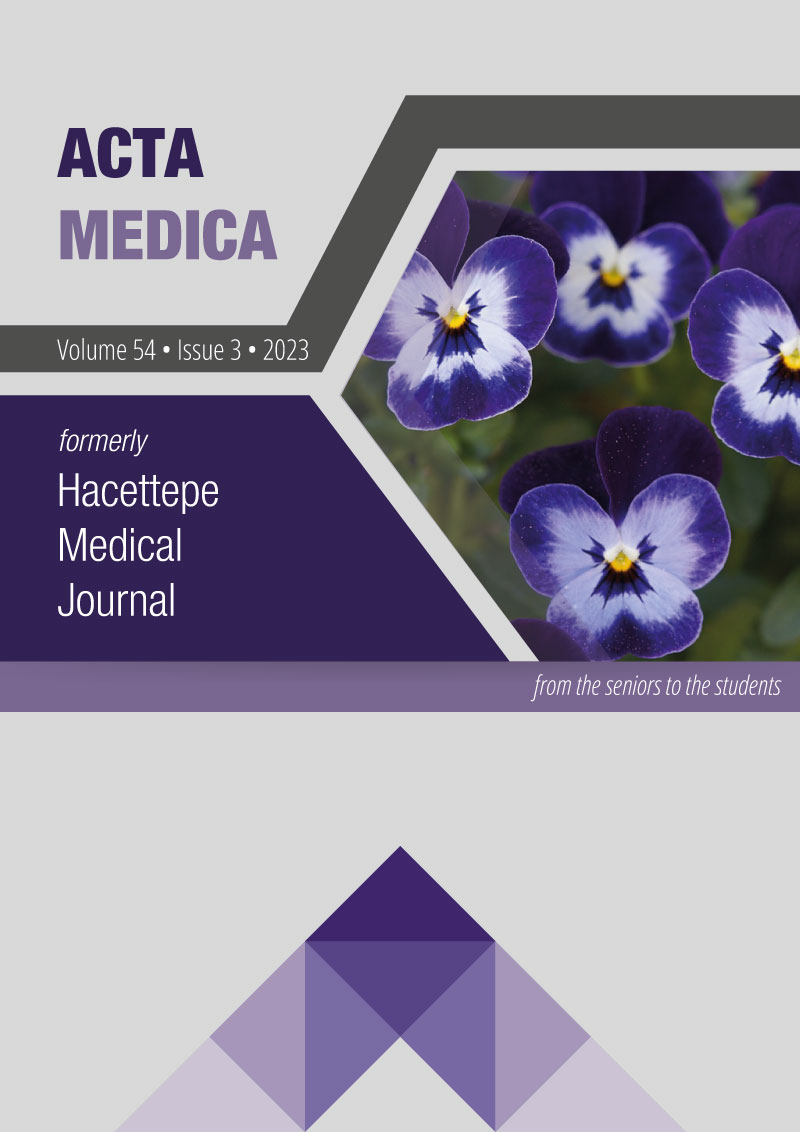Transarterial embolization for delayed bleeding after percutaneous nephrolithotomy
DOI:
https://doi.org/10.32552/2023.ActaMedica.917Keywords:
Percutaneous nephrolithotomy, hematuria, delayed bleeding, transarterial embolization, super selective embolizationAbstract
Objectives: The study aimed to evaluate the effectiveness and reliability of transarterial embolization (TAE) in managing delayed bleeding after percutaneous nephrolithotomy (PNL).
Materials and Methods: Patients presenting to our hospital’s emergency department with hematuria following PNL and treated with TAE were included in the retrospective analysis. Demographic, clinical, and radiological data were collected. Technical and clinical success rates of TAE were calculated. The impact of the embolization procedure on kidney function was determined using angiographic images, and pre- and post-procedure serum creatinine levels.
Results: A total of 13 patients included in the study presented with intermittent visible hematuria. The average interval between hematuria onset and PNL was 11.92±7.27 days. No hemodynamic instability was observed in any patient. CT angiography identified vascular pathology in 11 patients (84.6%), who subsequently underwent renal angiography for TAE without conservative treatment. Pseudoaneurysms were found in 7 patients (63.6%), and both pseudoaneurysms and arteriovenous fistulae in 4 patients (36.4%). Technical success was achieved in all embolization procedures. Hematuria resolved in all patients during follow up with a clinical success rate of 100%. Renal parenchymal loss after embolization was <%10 in 8 patients (72.7%), %11-24 in 2 patients (18.2%), and %25-50 in 1 patient (7.7%). There was no significant difference in serum creatinine levels before (mean 1.09±0.53 mg/dl) and after (mean 1.06±0.71 mg/dl) TAE (p=0.5). No major procedure related complications were observed.
Conclusions: TAE is an effective and safe method for the treatment of delayed bleeding following PNL. CT angiography facilitates diagnosis and treatment planning for patients with hematuria after discharge. Early TAE for patients with identified vascular pathology can increase technical and clinical success rates.
Downloads
Downloads
Published
How to Cite
Issue
Section
License
Copyright (c) 2023 Acta Medica

This work is licensed under a Creative Commons Attribution-NonCommercial-NoDerivatives 4.0 International License.


